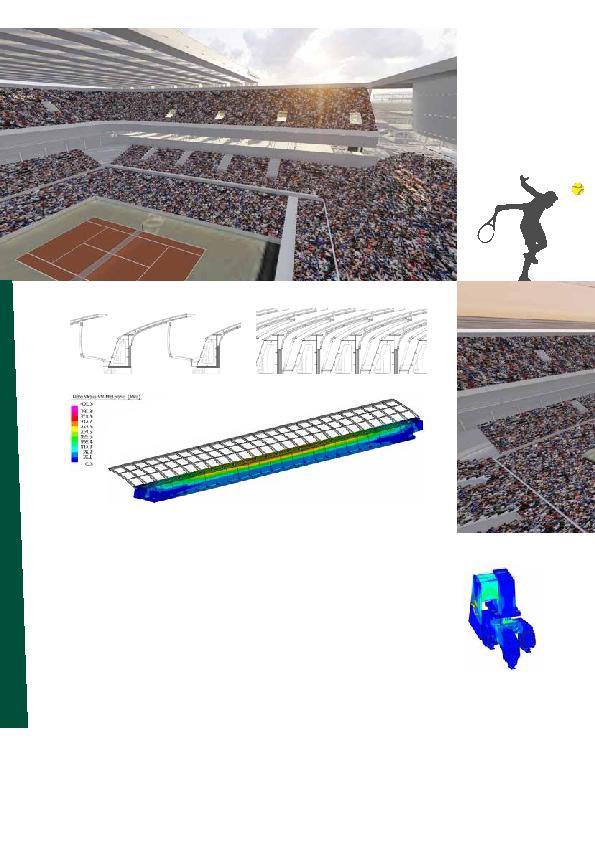
possible by the use of modern ultra-light fabric materials that incorporate wing-like cantilevers, and an
articulated and foldable compass-like system between adjoining beams. The operation of such a retractable
roof is achieved by a custom-designed rack-roller, a truly multi-disciplinary challenge involving both advanced
civil and mechanical engineering skills.
system driven by a pair of gear-motors with two pinions (one for each motor) was selected for each roller. An
electronic differential control system (master-slave) allows the control system to maintain constant and equal
traction. In the case of failure of one of the two motion groups, the pinion can be released and the roller can
move at reduced speed.
Accounting for these important dynamic forces required extensive numerical investigation and wind tunnel
testing of scaled samples under the supervision of Maffeis Engineering.